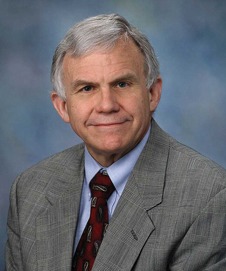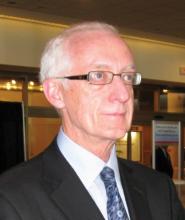GAITHERSBURG, MD. – The first transcatheter aortic valve replacement system being considered for use in the United States was voted for approval by the advisory committee of the Circulatory System Devices Panel of the U.S. Food and Drug Administration in their July 20 meeting.
The panel supported the use of the Edwards Sapien Transcatheter Heart Valve, model 9000TFX, sizes 23 mm and 26 mm, using the Retroflex 3 delivery system for transfemoral delivery for the narrow indication of patients with "severe symptomatic aortic stenosis who have been determined by a cardiac surgeon to be inoperable for open aortic valve replacement," which is considered the standard of care for patients who can be surgically treated. This deliberately restricted patient population represents cohort B of PARTNER (Placement of Aortic Transcatheter Valve Trial), a pivotal randomized study that was used as the basis for the device approval submission.
PARTNER showed "impressive mortality results" and quality of life (QOL) benefits attributable to the valve implantation, compared with a heterogeneously treated control group that received medical therapy and a high proportion of palliative balloon valvuloplasty*, according to FDA clinical reviewer and cardiovascular surgeon, Dr. Julie A. Swain.
The proportion of survival at 1 year was 50.3% for the 179 control patients in PARTNER’s cohort B, and 69.3% for the 179 patients assigned to the Sapien device, a significant difference. The median survival in years was 0.97 in the control group and 2.18 in the treated group, also a significant difference, according to Dr. Swain.
The control group represented "standard of care," which the FDA and the panel pointed out was actually a misnomer, as there was indeed no standard of care for these inoperable patients because of a lack of demonstrated effectiveness of any therapy in this population. The natural history of such patients upon onset of symptoms is a rapid decline followed by death, generally within a few years. This is a population that is already at risk for high levels of comorbidity and increased death rate because of their general age and degree of sickness.
However, a key concern expressed by both the FDA and the panel – and even by Dr. Craig R. Smith*, principal investigator of the PARTNER trial, who detailed the study findings during the company’s presentation at the meeting – was the high neurologic event rate (transcient ischemic attack [TIA] and stroke) associated with implantation of the transcatheter valve. This was coupled to a complaint by the FDA of the company’s "post hoc adjunctive definition of stroke" which used a modified Rankin scale score for disability (major vs. minor stroke), which was retrospective, nonvalidated, and largely based on patient self-evaluation, which is known to be poor in stroke victims. There were eight total neurologic events in the control group and 25 in the Sapien group, a significant difference. In the control patients, 7 ischemic/unclassified strokes were determined with 1 hemorrhagic event; in the Sapien group there were 16 ischemic/unclassified strokes, 3 TIAs, 3 intracranial hemorrhages, and 3 hemorrhagic events.
An additional complaint cited the lack of objective neurologic monitoring in the perioperative period, with neurologic events being determined by the judgment of the clinical staff based on symptoms observed. This was coupled to concerns regarding the lack of consistent and defined antithrombotic therapy in the trial.
Other concerns that were raised regarding device safety included the incidence of vascular damage in the transcatheter group (presumed to be the result of operator learning curve and the relatively large size of the delivery catheter, compounded by the complicated pathology of the cardiovascular systems of this severely ill patient population), and the presence of aortic regurgitation, some of which could be determined to be caused by paravalvular flow.
The panel agreed with the necessity of continued postmarketing studies, comprising both the continued follow-up of the original PARTNER cohort B and the use of a specific new postmarketing study focusing on the stroke issue in a roll-out of the device at an additional 75 centers, with 10-20 patients being enrolled in the study at each. The panel also urged that all patients receiving the TAVR (transcatheter aortic valve replacement) device be followed in a national registry, with a strong suggestion that the American College of Cardiology/Society of Thoracic Surgeons registry be considered as one possible means for doing this.
Representatives of three of the professional societies that were most involved in the potential use of TAVR technology spoke in support of the approval of the Edwards Sapien system during the open public hearing section of the meeting: Dr. Augusto D. Pichard* of George Washington University in Washington, who represented the SCAI (Society for Cardiovascular Angiography and Interventions); Dr. David Holmes, president of the ACC; and Dr. Michael Mack, president of the Society of Thoracic Surgeons and director of cardiovascular medicine and research at the Heart Hospital Baylor Plano (Texas) system. The latter two organizations have been intimately collaborating in the development of a potential registry, based on current registry systems, that would track all patients with severe aortic stenosis who receive treatment with medical therapy, balloon valvuloplasty, or TAVR for purposes of long-term comparative effectiveness analysis.




